
Asset Management Manual
A guide for practitioners!

Asset Management Manual
A guide for practitioners!
MIGUEL NÚÑEZ, Consejería de Transportes e Infraestructuras de la Comunidad de Madrid, Spain
Reliable data and sound analyses are necessary to manage a road network in a cost-effective manner. Nowadays, appropriate systems and equipment are available for gathering data and analysis. Based on sound analyses, properly financed road improvement plans can be estimated. It is possible to outline different improvement scenarios on the basis of given priorities, e.g. reduction of fatal accidents, and financial constraints. The process should blend managerial and technical perspectives, as is shown with an empirical illustration from the road network of the Madrid Region in Spain.
For a civil engineer the key motivation, in regards to his expertise, is undoubtedly to put it at the service of companies and public organisations, but the main goal is ultimately the service provided to the citizen. This would, no doubt, be envisioned in the case of road network maintenance. Clearly, our work must be done with care and perseverance in order to achieve the best possible results.
What it is set out below reveals the integrated vision that the Department of Communications and Transport of the Region of Madrid has followed in developing different type of contracts in order to obtain the best results, both technically and economically.
So, the real case of the Madrid Region will be described to exemplify how the technical and economic/administrative perspectives can be arranged in order to achieve the best viable result in view of the specific challenge that is road assets management. There has been a significant reduction in the budget for new infrastructures in recent years, with investments allocated to the conservation of the existing ones. We have a highly developed infrastructure network thanks to the heavy investments in previous years.
The new construction activities focus on obtaining improvements in road safety, through remodelling of intersections, construction of roundabouts, elimination of sections of accident black spots, improvements of links, improvements of routes, construction of bus stops, improvements in pedestrian crossings, etc.
The road network of the country of Spain and the Region of Madrid is divided as follows:
Table 1.1.4.1: Description of Spain and Madrid networks

The Roads Maintenance Strategy in Madrid region has allocated more than 160 million euros during the 2018-2021 period, divided into five main items:
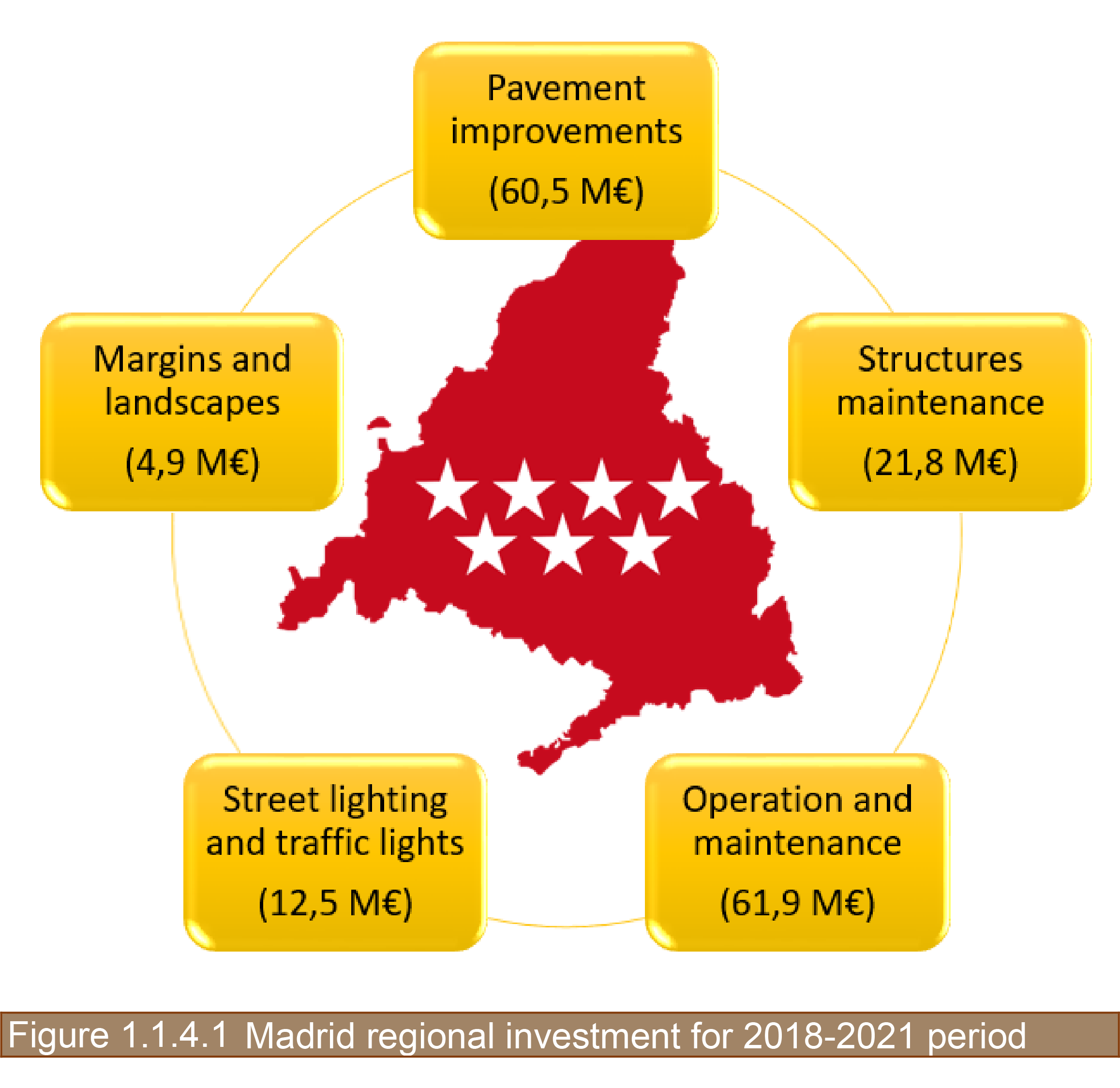
With regard to improving the pavements, two contracts are being implemented. One entails the visual inspection of the entire network and a second contract includes the survey of the pavements using high-performance equipment.
The entire road network of Madrid region managed by the Department is classified into:
By means of the first contract, the visual inspection of the entire network, metre by metre, is being carried out and its level of cracking defined in terms of:
The surface state of the network is classified by analysing these aspects, taking five cracking levels into consideration. Thus, the Madrid Region's network has been classified as follows:
These are:
Table 1.1.4.2: Limit values for deflection based on the category of heavy traffic (in mm/100)

The information obtained in the condition survey contract, as well as the information resulting from the visual inspection contract being carried out parallel to the condition survey contract, will be recorded in the management system used by the Department since 2006 for managing the information on its road network. This system, called ICARO, is an effective and easy-to-use tool that allows both the technicians and Department managers to efficiently manage the available resources, with the main objective of carrying out preventive conservation of the Madrid Region’s road network.
To achieve this objective, it is absolutely necessary that the information to be analysed is accurate. For this reason, before loading the survey data into the management system, the company RAUROS is carrying out the coherence analysis described previously. This way, by disallowing the invalid survey data, the information ultimately used by the Department's technicians and managers to take decisions is completely reliable.
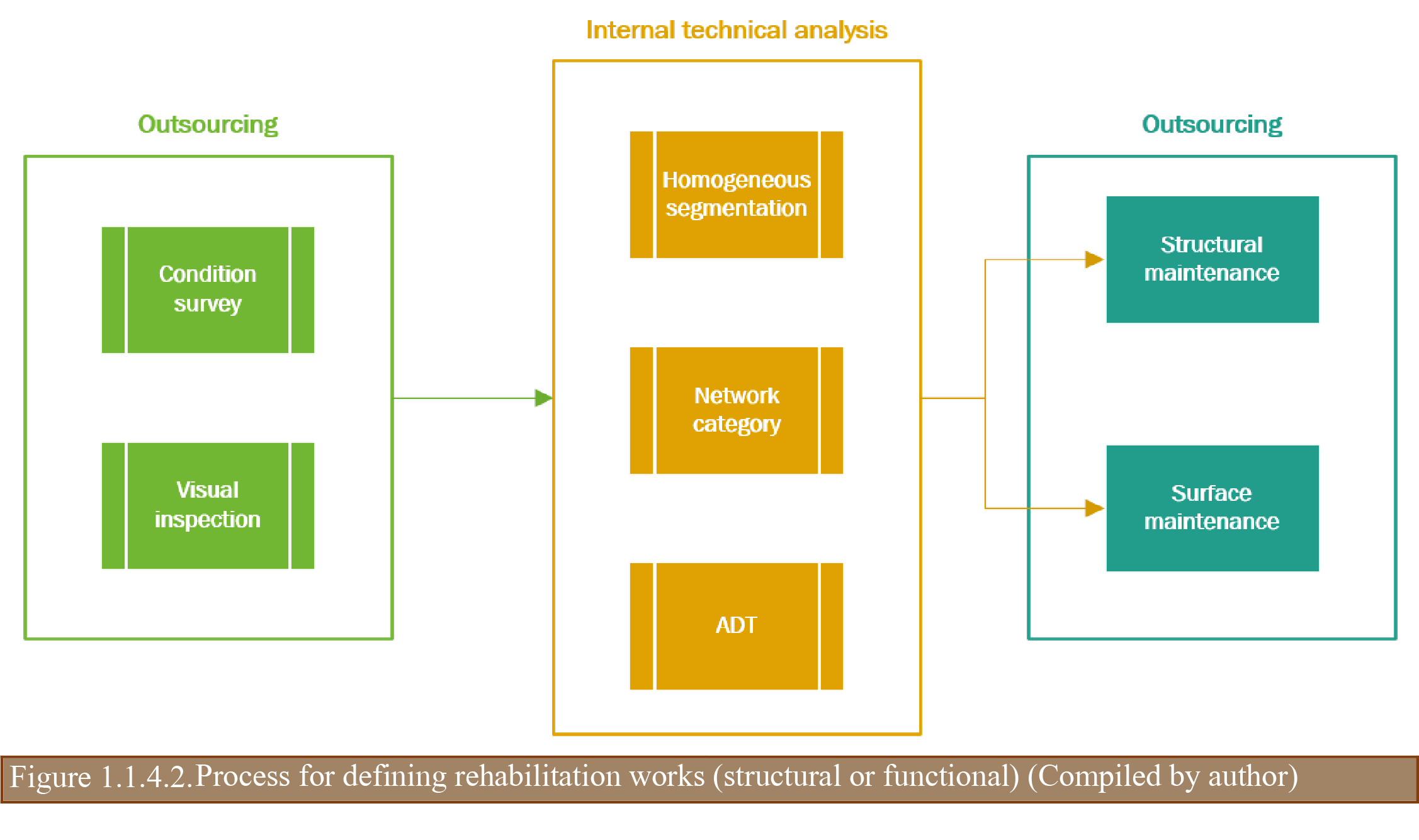
These activities are:
Thus, the work carried out or planned to be carried out in the 2018 to 2020 period is reflected in Figure 1.1.4.3.
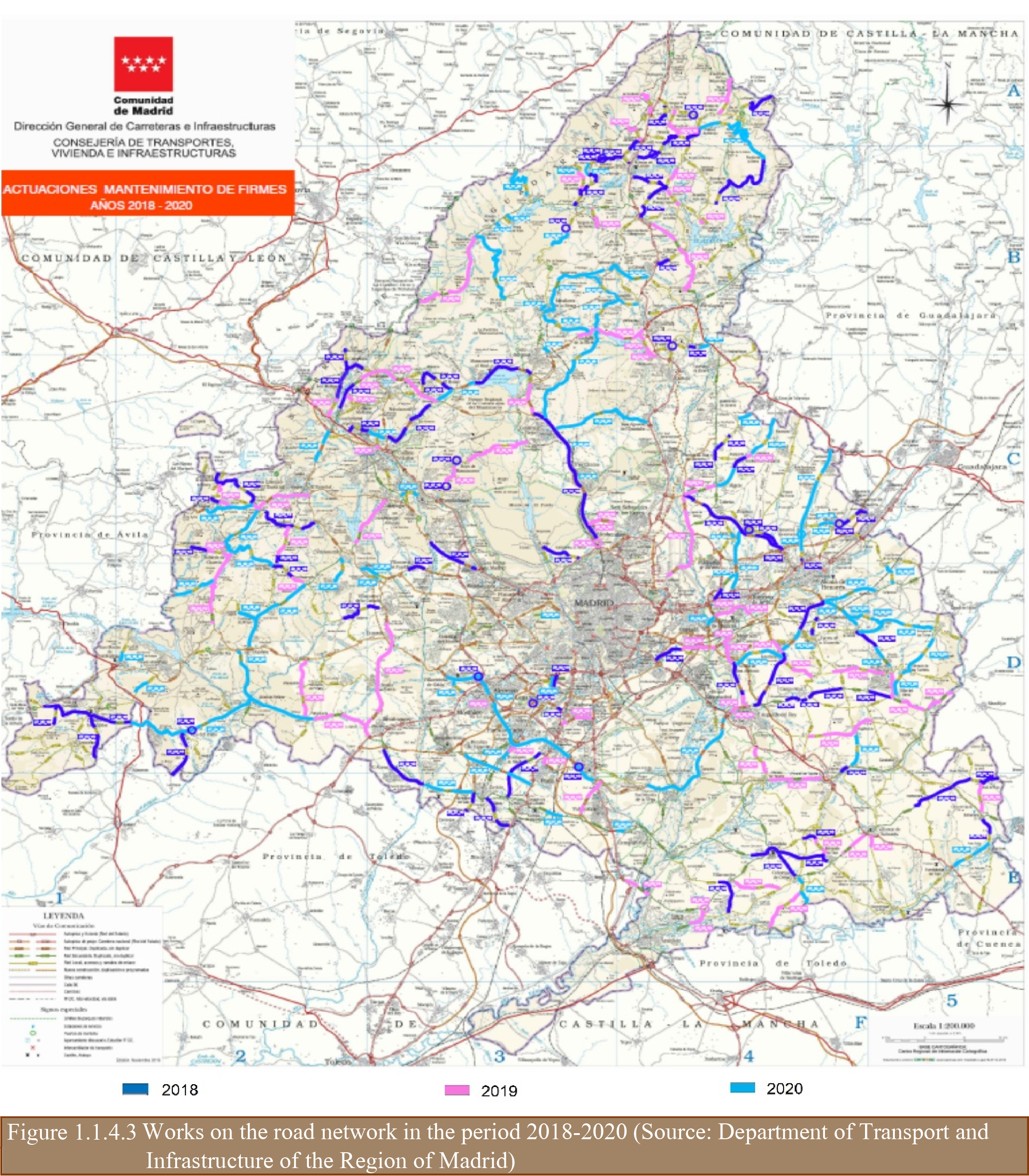
This work is awarded by tender in contracts for the rehabilitation services contracts by batches, awarding a maximum of two batches to the same rehabilitation company.
These batches correspond to the eight zones into which the Region of Madrid is divided in terms of road maintenance. Table 1.1.4.3 describes the length at which action must be taken and the budget allocated for each of the batches.
Table 1.1.4.3: Pavement improvement contracts

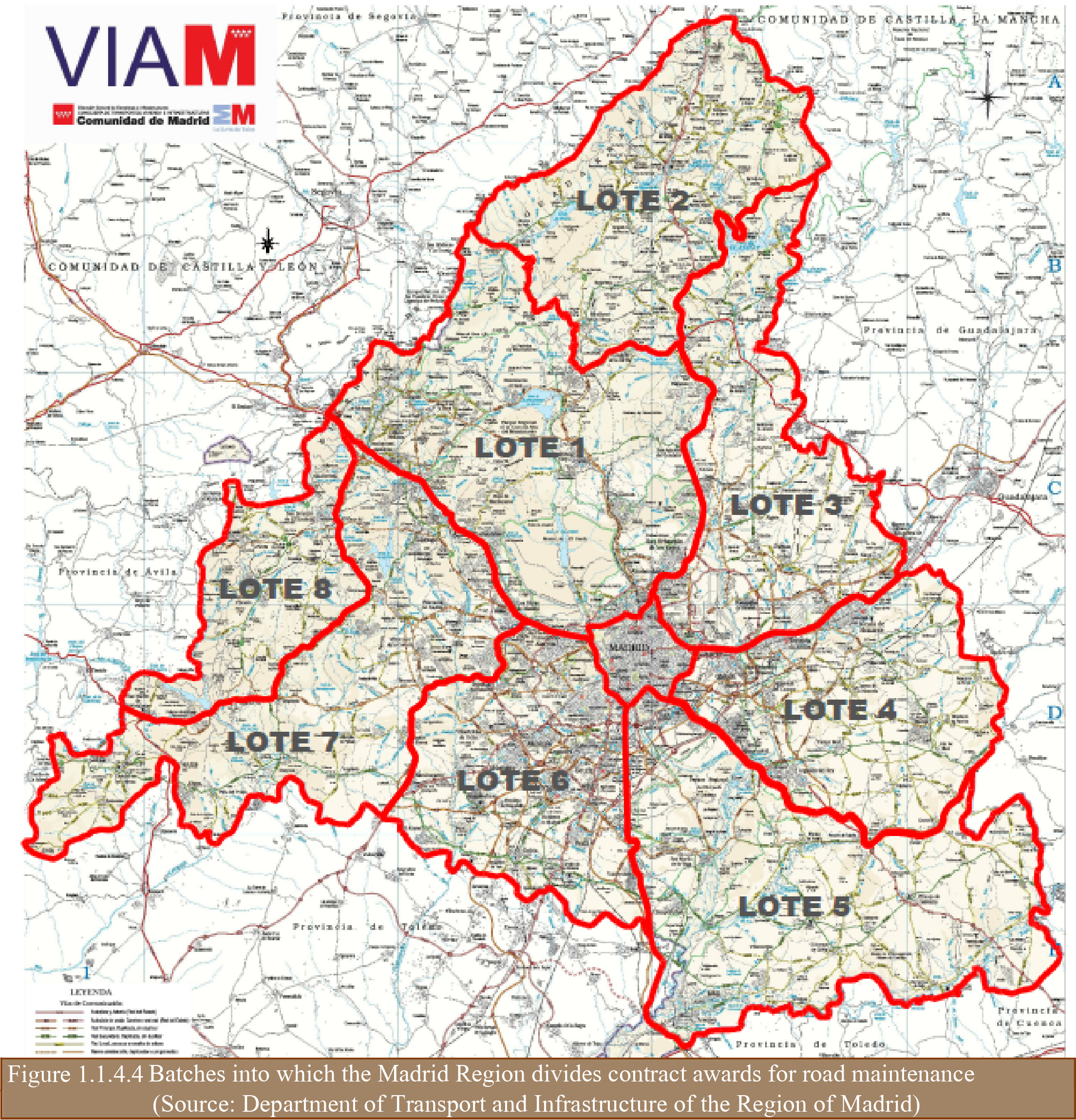
With regard to the maintenance of the structures, the department is currently implementing the “Contract for the inspection and oversight of bridges and structures in the Madrid Region road network (2016 - 2019)".
The department is currently responsible for maintaining 1,122 structures spread throughout the region.
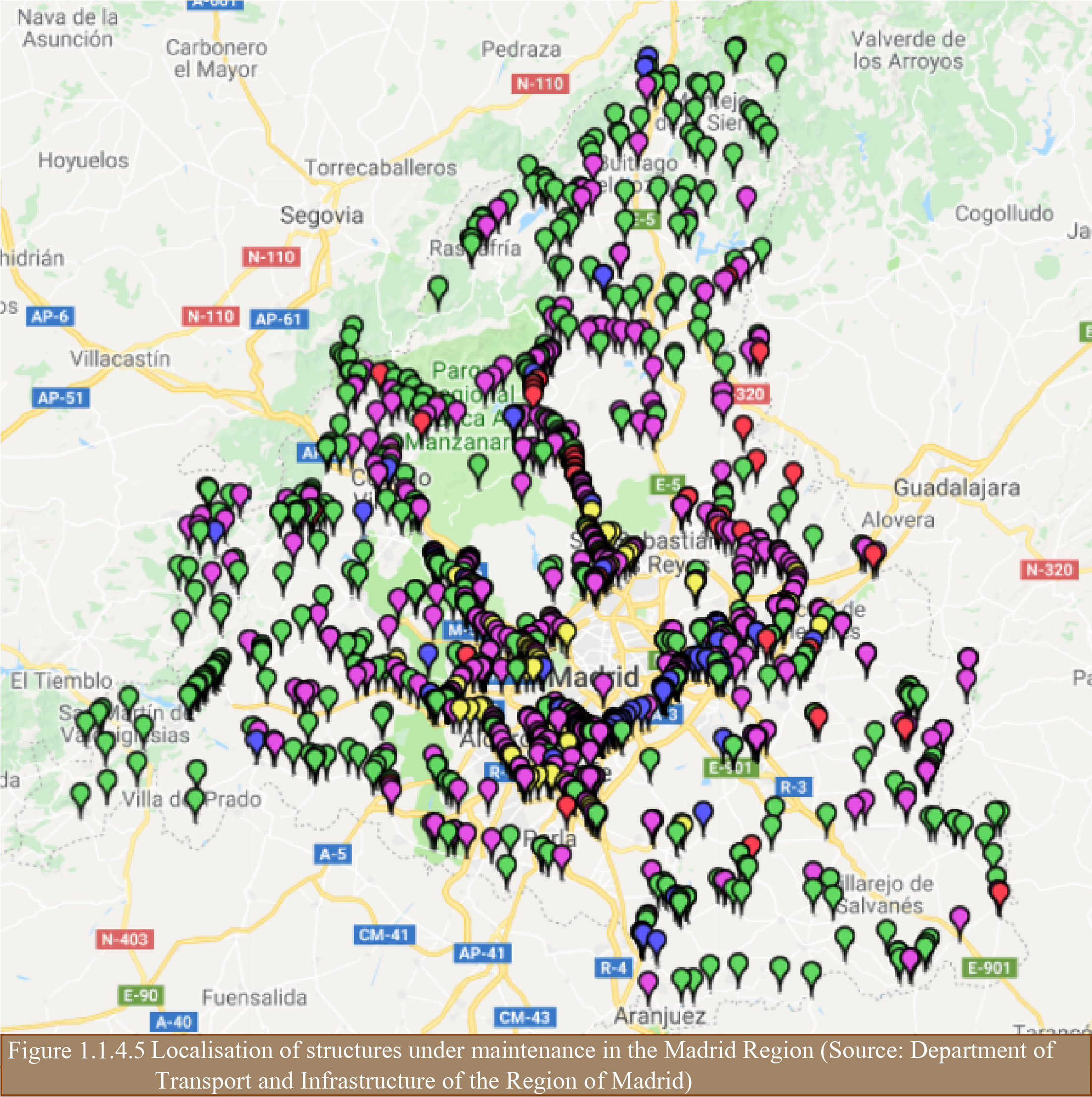
This analyses the trends of different indices that indicate their condition:
Thus, priority has been given to the necessary actions by dividing them into three contract award batches: North, East and West (dark blue, pink and light blue in Figure 1.1.4.6).
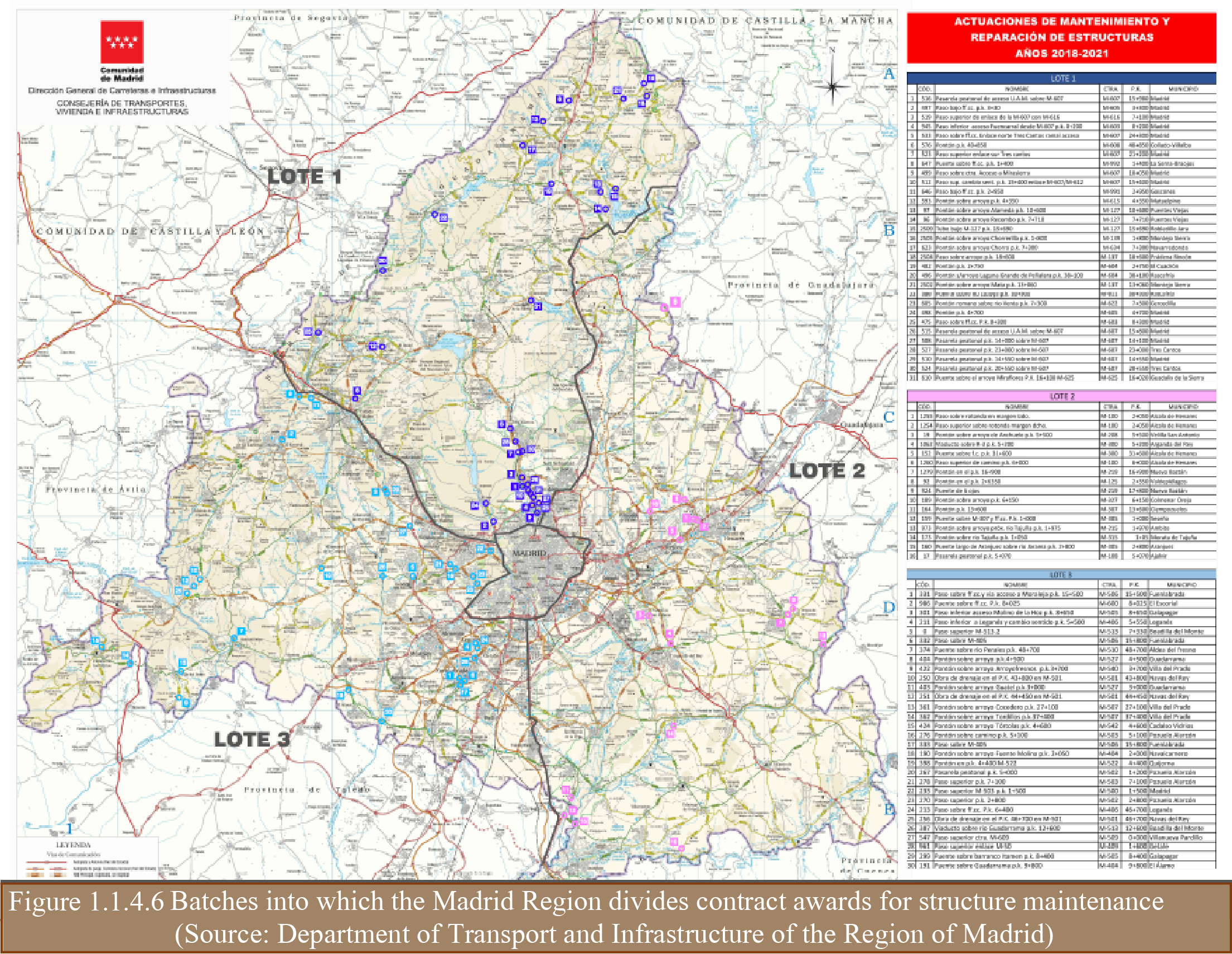
The investment planned to be made in the 2018-2021 conservation period is shown in Table 1.1.4.4.
Table 1.1.4.4: Budget for bridge maintenance

With regard to operation and maintenance, management thereof has also been divided into nine batches, seven of them awarded to different contractors (a maximum of two batches per contractor), and the remaining two managed with Region of Madrid resources, as indicated in Table 1.1.4.5 and Figure 1.1.4.7.
Table 1.1.4.5: Operation and maintenance costs

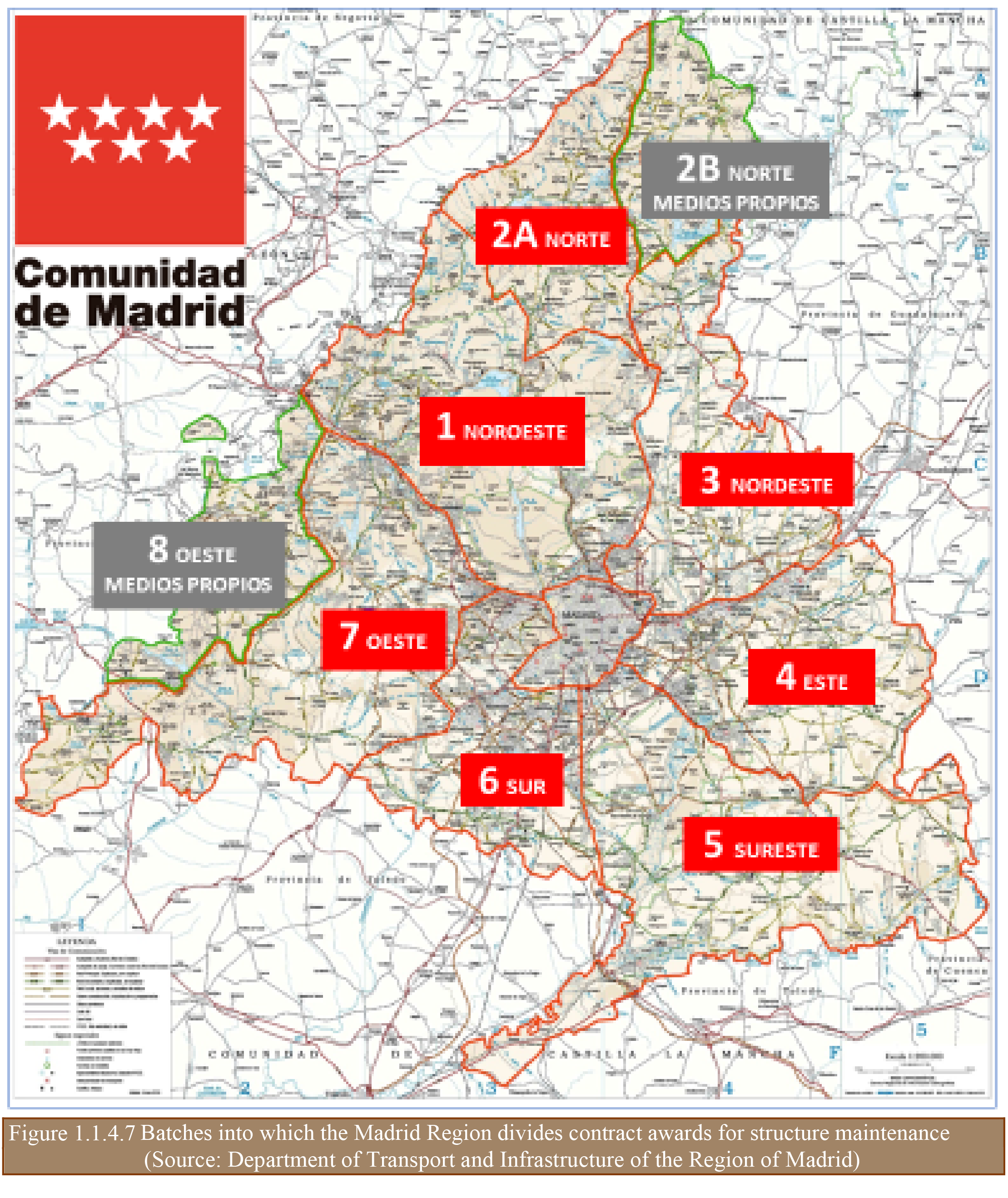
Payment of these contracts is based on service contracts for the operation and maintenance of the roads under their responsibility based on three types of activities:
The maintenance of these aspects of the network is done in two separate maintenance contracts during three years.
Table 1.1.4.6: Lighting and traffic light installation maintenance contracts

To carry out the maintenance of margins, crossings and islands, there is a contract that includes:
In addition to the contracts mentioned above, there are five shadow tolls for roads which are subsidised for road users. This subsidy is returned to the concession-holder.
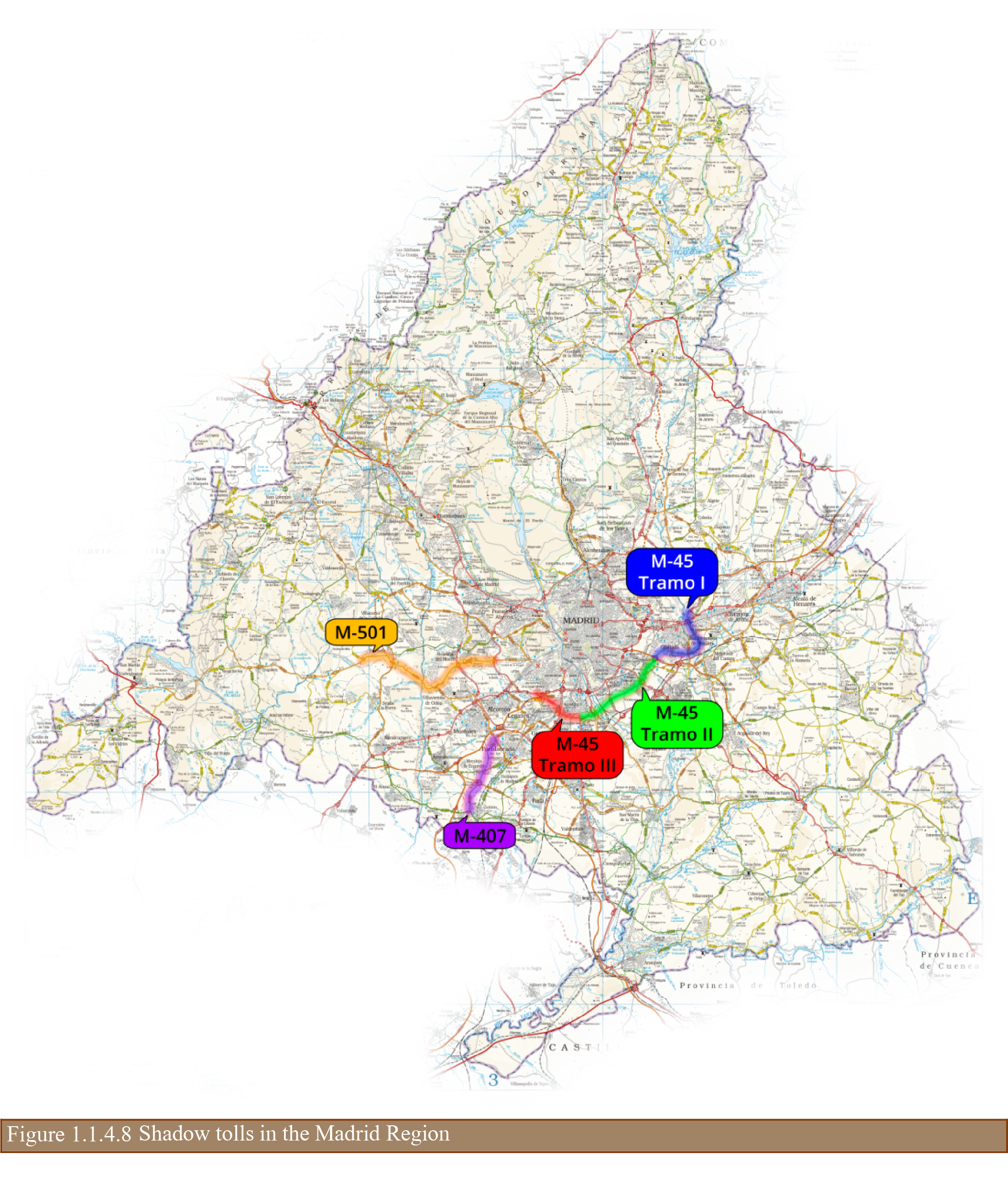
The payment to the concession-holder is done with an annual subsidy corresponding to the traffic during the yearly period that has just ended, multiplied by the rate for the yearly period updated with the IPC. The amount is calculated each yearly period and the monthly subsidy to the concession-holder is one-twelfth thereof. Payment to the concession-holder has an annual limit that cannot be exceeded, regardless of the increase in vehicles travelling on the road. This is the risk of the concession.
Table 1.1.4.7: Details on the concessions currently being implemented in the Madrid Region

As described, the maintenance and conservation model of the Madrid Region's road network is a model based on the different needs of the assets and the different possibilities for maintenance and conservation, and selects the most appropriate, both technically and economically.
The Department of Transport and Infrastructure works constantly to achieve the highest quality standards in its road network and thereby provide users with the tools to attain a level of development in the area.